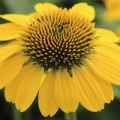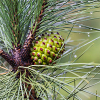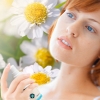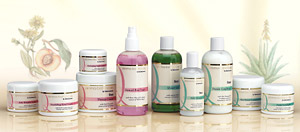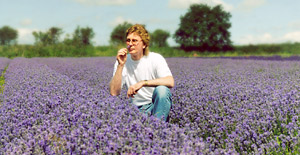Complementary & Alternative Medicine – Can It Help You?
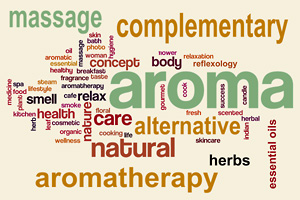 Complementary and alternative medicine (CAM) is the combined use of medical practices and products that aren’t considered to be a part of conventional medicine.
Complementary and alternative medicine (CAM) is the combined use of medical practices and products that aren’t considered to be a part of conventional medicine.
Many people today are turning to the CAM approach in the hope that they can prevent disease and live a more enhanced quality of life.
People often first encounter complementary and alternative medicine when conventional medical techniques are unsuccessful in treating chronic health conditions and psychological behaviors. In other words, when all else fails. The lack of proper insurance coverage for certain conditions is also an important factor why more and more people are turning to CAM.
Complementary and alternative medicine is based on both provider and non-provider therapies. The provider therapies include reflexology and acupuncture and the non-provider therapies include herbal remedies, certain types of exercise and meditation. A complementary and alternative approach to your health can help you get in touch with your personal power and become the best person you can be, both in mind and body.
If you’re in physical pain or are not as mentally alert as you used to be, life can be difficult, and if left untreated you may find yourself in the proverbial rut as your life swiftly passes by. The ancient findings of Eastern medicine, combined with our modern technology, can lead the way back to physical fitness and mental alertness.
Some types of healing therapies and treatments that you might want to consider are:
- Aromatherapy – (of course!) The essential oils derived from herbs, plants and flowers can be used in a variety of ways to help improve and maintain health and wellbeing. Popular aromatherapy treatments include massage, baths or inhalation therapies.
- Acupuncture – A professional acupuncturist inserts long, thin needles just under the skin in specific areas of the body that correspond with energy lines. Acupuncture therapy can help relieve pain, relax the mind, or support getting rid of bad habits such as smoking. It’s usually completely painless.
- Herbal remedies – The use of natural herbs to relieve or cure common maladies such as sunburn, colds, flu, headaches and other symptoms have been used since ancient times. Herbal remedies were actually the first medicines ever used, and they must be reasonably effective or the human race would not have survived!
- Exercise – Yes, some types of exercise can even be considered ‘complementary’! Yoga is a series of gentle exercises and stretches that promotes deep breathing as well as cardiovascular fitness. This is very much a part of the Eastern tradition of keeping your body fit and healthy, and helps the body build stronger defences to fight off illnesses when they do occur.
- Natural diet – A proper balanced diet of the yin and yang foods can help maintain your weight and also promote mental alertness. A natural diet consists of the ‘common sense’ foods that we all know are good for us, such as fruit, vegetables, grains that are unrefined and unprocessed, legumes and nuts.
- Massage and Reflexology – Often used in combination with aromatherapy, these therapies are relaxation and healing techniques that help increase circulation and relieve tense and tight muscles.
Until twenty or thirty years ago, little information could be found about this growing area of healthcare. However, over recent years an astounding amount of alternative medicine books have been written, and new ones continue to appear regularly in book stores all over the world. A simple search on the Internet will also reveal scientific studies as well as informative articles about alternative health care and what it can do for you.
Complementary and alternative medicine scrutinized
Of course, there are skeptics who claim that alternative medicine doesn’t work, but they’re now few and far between. Academic medical centers such as Children’s Memorial Hospital in Chicago are adapting certain alternative medicine techniques into their programs. U.S. News and World Report recently published an article on alternative medicines and wrote that Children’s Memorial is usually a “hard-nosed, tough-cases, research-oriented emblem of western medicine.” When a teaching hospital such as this begins to allow alternative therapies to coincide with their traditional western theories, others tend to jump on the bandwagon and create their own balance of West and East.
Most physicians today agree that alternative techniques such as yoga, massage, and more recently aromatherapy, can play a vital role in our daily lives to keep our health in good order. Generally speaking, the Chinese believe that a combination of Western and Eastern remedies can be successfully combined to treat chronic diseases like cancer, but few Westerners would consider giving that approach a try – yet.
It’s also important to realize that the Western healthcare system dominates because some people are not as open to the Eastern approach to healthcare treatments such as CAM. The very words ‘alternative medicine’ conjure up witchcraft and religious connotations that many find off-putting or downright scary. But alternative and complementary medicine practices have scientific foundations, although admittedly, it is only recently the science has begun to understand how they work.
The most important point is that all modern medical treatments should include practices that deliver the best treatment or therapy for the patient. As we understand more about the philosophical and medical framework of Western and Eastern medical traditions, new and better treatments should be investigated more deeply and then tested. Complementary and alternative medicine really could offer better health to everyone.
Copyright © Quinessence Aromatherapy Ltd 2020. Written by Sue Charles

